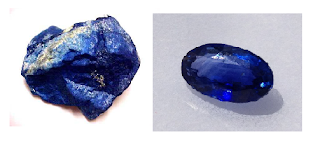Remember:
Safer choices are coded: 1, 2, 4 and 5.
Avoid 3, 6 and most plastics labelled 7.
Safe to use for Foods and Drinks:
 |
| Code 2: HDPE (High-Density PolyEthylene) |
- Code 2: HDPE (High-Density PolyEthylene):
• Qualities: Thick, Opaque.
• Common usage: Milk, Water jugs, Juice bottles, Detergent, Shampoo, Motor oil, Toys.
• Limit using HDPE. It can be recycled.
 |
| Code 4: LDPE (Low-Density PolyEthylene) |
- Code 4: LDPE (Low-Density PolyEthylene):• Qualities: Soft, flexible.• Common usage: Grocery store bags, Plastic Wrap, Garbage bags.• One of the safer plastics. Can recycle it. Limit over using nonetheless.
 |
| Code 5: PP (Poly Propylene) |
- Code 5: PP (Poly Propylene):
• Qualities: Hard but flexible.
• Common usage: Ice cream, Yogurt containers, Drinking Straws, Syrup bottles, Salad bar Containers, Diapers.
• One of the safer plastics, but be sure to recycle wherever possible.
Safe for Water Bottle or Soft Drink Container:
 |
| Code 1: PET OR PETE |
- Code 1: PET OR PETE (Nylon):
• Qualities: Thin, Clear
• Common usage: Bottles for Water, Soda, cooking oil, peanut butter.
• Safe for one-time use. Should not be reused or heated. Can be recycled once into new secondary products such as fabric, carpet or plastic lumber.
Risky Plastics NOT Safe for Food and Drink:
 |
Code 3: PVC (Polyvinyl Chloride) |
- Code 3: PVC (Polyvinyl Chloride):
• Qualities: Rigid or Flexible.
• Common usage: Bibs, Mattress covers, Commercial-grade plastic wrap, Food and Detergent containers.
• Avoid it: Manufacture of PVC creates Dioxin, a potent carcinogen that contaminates humans, animals, and the environment. PVC also contain Phthalates to soften it. Causes male reproductive problems and birth defects. PVC is not easily recycled.
- Code 6: PS (PolyStyrene):
• Qualities: Rigid.
• Common usage: Styrofoam Coffee cups, Meat trays. Opaque plastic spoons and forks.
• Avoid it: PS leaches styrene, a known neurotoxin with other harmful health effects.

















